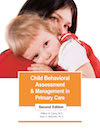 How do we know what a person's temperament really is?
How do we know what a person's temperament really is?
Methods for measuring temperament
There are a number of different schemes for conceptualizing temperamental characteristics (see the dimensions of temperament link for more on this). But no matter how the various traits are defined, there needs to be a way for researchers and/or clinicians to take 'measurements' in a group of individuals.
Three ways appear to be most common: interviews, observations and questionnaires. Of course, there are many different procedures used with each method but data gathering in the temperament field is most likely to utilize one of these techniques.
Interviews usually involve asking a series of standardized questions to each person in the group being evaluated and recording the answers, which are later rated based on a rubric devised for that purpose. The original NYLS research used a 'semi-structured' interview method where parent's statements about their infants were elicited and then rated as high, intermediate or low for each of the nine temperament characteristics. Advantages for the interview method include being able to ask followup questions to more accurately determine the response and having the respondent present to allow for inclusion of nonverbal information such as tone of voice, body posture and attitude in the assessment, as clincians frequently do. Disadvantages incude the cost of doing lengthy session 1:1 with subjects, and the cost of having an interviewer spend an extended amount of time with each individual.
Observations used in research involve looking directly the individual's temperament-related behavior, either in their own setting (such as home or school) or in a structured environment such as a laboratory. In addition, clinicians may do direct observations in their offices. Observations may be rated using a coding system to score temperament dimensions while the behavior is being carried out, or the behavior may be videotaped and coded later. Advantages of observational methods include the presence of an 'objective observer' who is able to use a standard format to record what is seen. Disadvantages include the brevity of observational sessions (typically 20 minutes to one hour on a single day) and the limitation of the observation to one or a small number of settings, potentially limiting the reliability of the measure.
Questionnaires are also employed to assess temperament; ratings can be obtained from parents and other caregivers, teachers, child care workers, or even from the person themselves. The ratings typically require a numerical response to a standardized question asscociated with a temperament characteristic. Anywhere from 5 to 15 items per scale are typical. Questionnaire ratings are usually normed upon a large sample and individual profiles are compared with the established norms. The advantages of questionnaires are that items are standardized, they are completed within a few minutes and are a relatively inexpensive way to collect data. Disadvantages include potential rater bias or distortion, inability to clarify ambiguous or incomplete responses and need to establish validity of ratings.
Studies have looked at the overlap between different measures of temperament when assessing the same subjects and typically find low to moderate correlations between different measures, indicating significant overlap but also specific contributions according to method of measurement. Most clinicians and researchers use multimethod assessments as a result.











